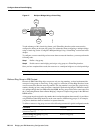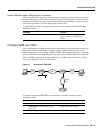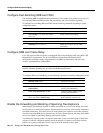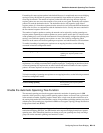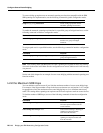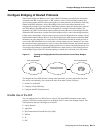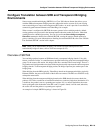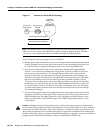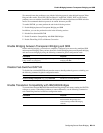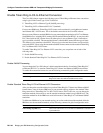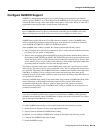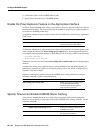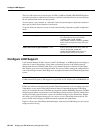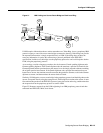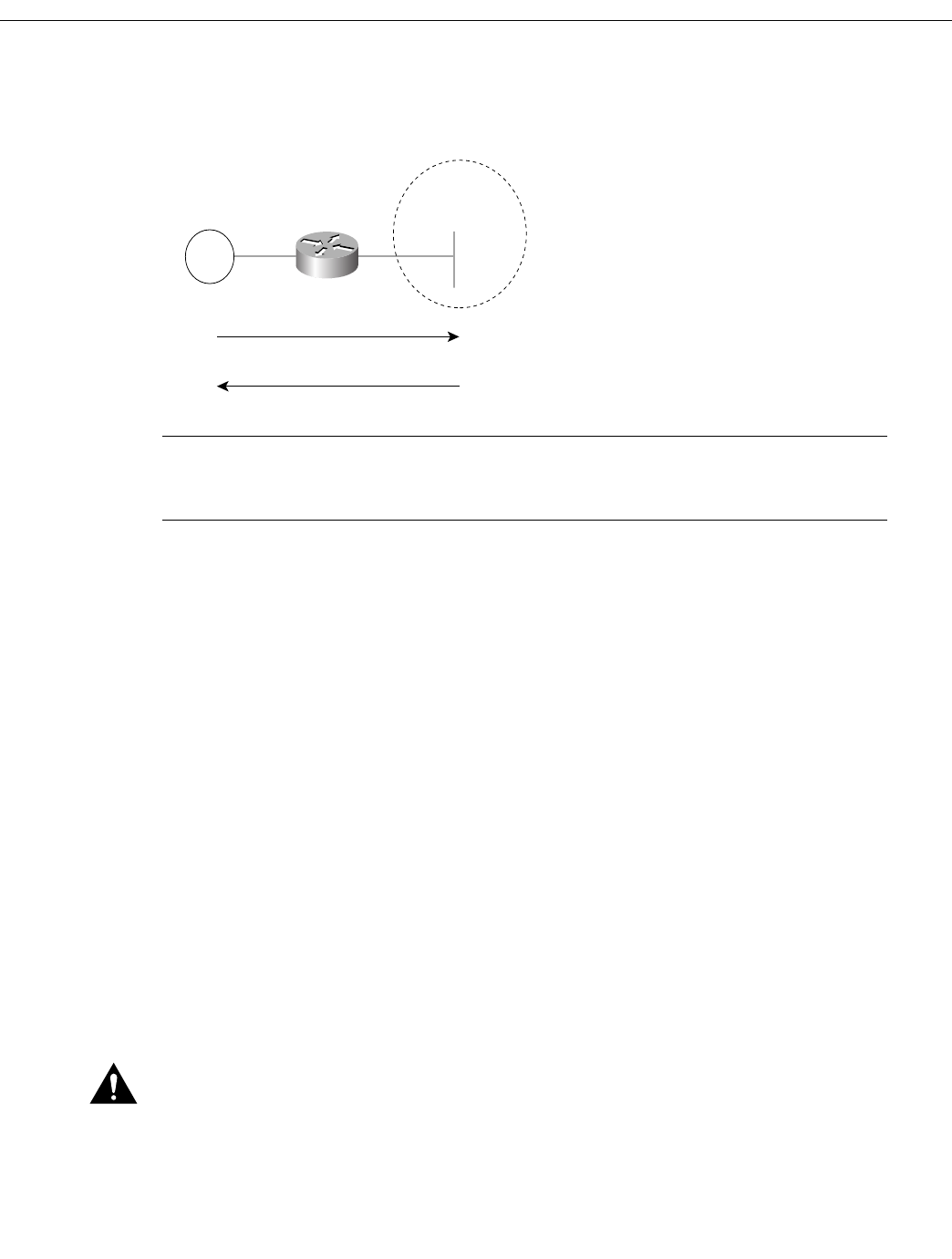
Configure Translation between SRB and Transparent Bridging Environments
BC-120
Bridging and IBM Networking Configuration Guide
Figure 50 Example of a Simple SR/TLB Topology
Note The Spanning-Tree Protocol messages used to prevent loops in the transparent bridging
domain are not passed between the SRB domain and the transparent bridging domain. Therefore,
you must not set up multiple paths between the SRB and transparent bridging domains.
The following notes and caveats apply to all uses of SR/TLB:
• Multiple paths cannot exist between the source-route bridged domain and the transparent bridged
domain. Such paths can lead to data loops in the network, because the spanning-tree packets used
to avoid these loops in transparent bridging networks do not traverse the SRB network.
• Some devices, notably PS/2s under certain configurations running OS/2 Extended Edition
Version 1.3, do not correctly implement the “largest frame” processing on RIFs received from
remote source-route bridged hosts. The maximum Ethernet frame size is smaller than that
allowed for Token Ring. As such, bridges allowing for communication between Ethernet and
Token Ring will tell the Token Ring hosts, through the RIF on frames destined to the Token Ring,
that hosts on the Ethernet cannot receive frames larger than a specified maximum, typically
1472 bytes. Some machines ignore this run-time limit specification and send frames larger than
the Ethernet can accept. The router and any other Token Ring/Ethernet bridge has no choice but
to drop these frames. To allow such hosts to successfully communicate across or to an Ethernet,
you must configure their maximum frame sizes manually. For the PS/2, this can be done through
Communications Manager.
• Any access filters applied on any frames apply to the frames as they appear on the media to which
the interface with the access filter applies. This is important because in the most common use of
SR/TLB (Ethernet and Token Ring connectivity), the bit ordering of the MAC addresses in the
frame is swapped. Refer to the SR/TLB examples in the “SRB Configuration Examples” section
of this chapter.
Caution Bridging between dissimilar media presents several problems that can prevent communication
from occurring. These problems include bit order translation (or usage of MAC addresses as data), maximum
transmission unit (MTU) differences, frame status differences, and multicast address usage. Some or all of
these problems might be present in a multimedia bridged LAN and prevent communication from taking place.
Because of differences in the way end nodes implement Token Ring, these problems are most prevalent when
bridging between Token Rings and Ethernets or between Token Ring and FDDI LANs.
S1108a
Transparent
bridging domain
Source-route
bridged domain
Frames lose RIFs in this direction
Frames gain RIFs in this direction
Transparent
bridging "ring"
Router running
SR/TLB
Token
Ring



